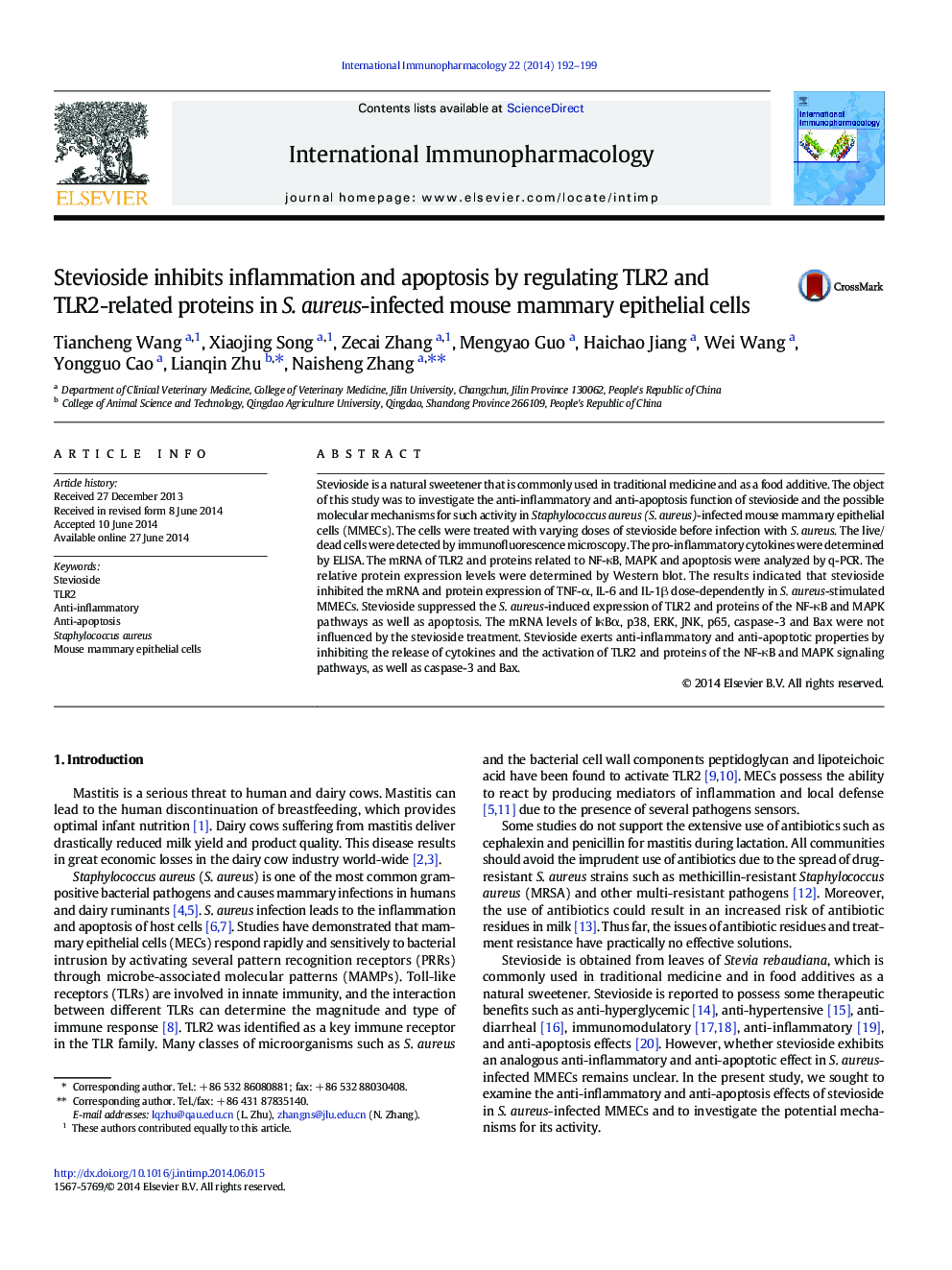| Article ID | Journal | Published Year | Pages | File Type |
|---|---|---|---|---|
| 2540631 | International Immunopharmacology | 2014 | 8 Pages |
•Stevioside protect cells from death in S. aureus infected MMECs.•Stevioside decreased the release of TNF-α, IL-1β and IL-6.•Stevioside inhibit NF-κB and MAPK signal pathways and apoptosis-related proteins.•Stevioside inhibit TLR2 induced inflammatory and apoptosis signal.
Stevioside is a natural sweetener that is commonly used in traditional medicine and as a food additive. The object of this study was to investigate the anti-inflammatory and anti-apoptosis function of stevioside and the possible molecular mechanisms for such activity in Staphylococcus aureus (S. aureus)-infected mouse mammary epithelial cells (MMECs). The cells were treated with varying doses of stevioside before infection with S. aureus. The live/dead cells were detected by immunofluorescence microscopy. The pro-inflammatory cytokines were determined by ELISA. The mRNA of TLR2 and proteins related to NF-κB, MAPK and apoptosis were analyzed by q-PCR. The relative protein expression levels were determined by Western blot. The results indicated that stevioside inhibited the mRNA and protein expression of TNF-α, IL-6 and IL-1β dose-dependently in S. aureus-stimulated MMECs. Stevioside suppressed the S. aureus-induced expression of TLR2 and proteins of the NF-κB and MAPK pathways as well as apoptosis. The mRNA levels of IκBα, p38, ERK, JNK, p65, caspase-3 and Bax were not influenced by the stevioside treatment. Stevioside exerts anti-inflammatory and anti-apoptotic properties by inhibiting the release of cytokines and the activation of TLR2 and proteins of the NF-κB and MAPK signaling pathways, as well as caspase-3 and Bax.
